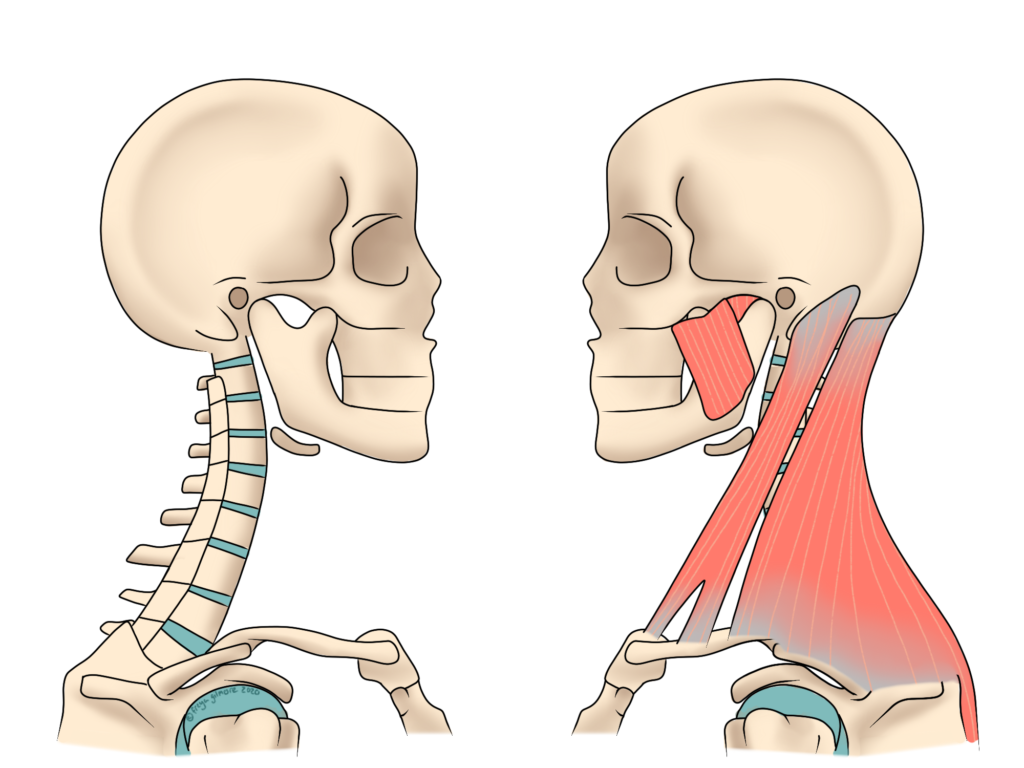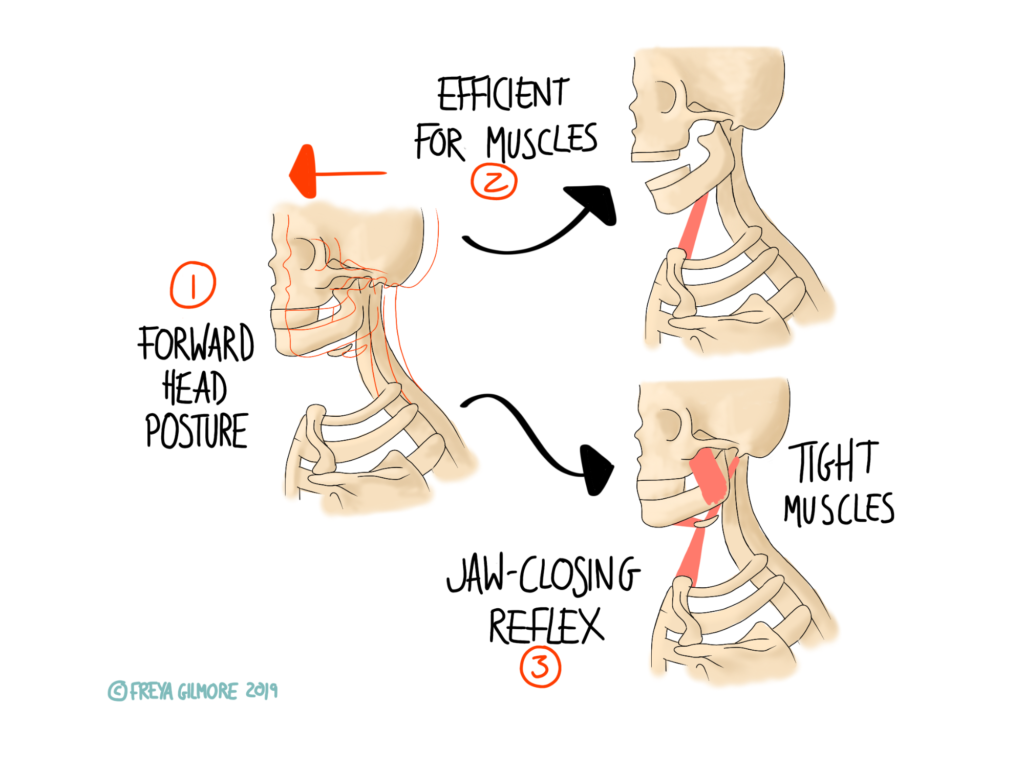Neck pain is a common problem that leads patients to clinic. There are a number of potential causes for it, some of which are explained below.

Muscular Neck Pain
Muscles in the neck can cause pain if they are injured. One example would be a muscle strain, where the muscle has been worked beyond its capacity. The onset of this kind of pain might be sudden, especially if following trauma. Sometimes the pain takes a while to develop, or changes while the body goes through the earliest responses to the injury. Following traumatic neck pain, it would be wise to seek medical attention to ensure that there are no serious injuries.
When the body experiences pain, it perceives it as a threat and attempts to protect itself. One of the easiest ways it can do this is by bracing the area by tensing the local muscles. This is helpful if there’s an injury like a fracture or sprain. But it can make other issues worse, where movement might actually be helpful.

The diagram above shows how a forward head posture can ask too much of the neck muscles. The body’s reaction to this can cause further issues with muscles around the jaw. This is one example of how one issue can affect another area, even if that first area caused you no pain. Through detailed investigation, we can spot these patterns and get to the root of your problem. Headaches can also originate from the neck in a similar way.
Neck Pain from a Joint Issue
Sometimes a joint in the neck becomes irritated or locked up. This might be a one-off problem after sleeping awkwardly, or “cricking” your neck. Alternatively, it might be a recurrent problem for you. In either case, your osteopath can assess the problem and help to relieve it. If it’s something that keeps happening, Beverley will work to identify the factors that led to this episode. Sometimes the joint is overloaded by other areas of the body working inefficiently. Often the back is involved, and treatment here can help to ease the load on the irritated neck joint.
Joints in the neck can also be irritated by arthritis. Osteopaths can help with both osteoarthritis (OA), and the symptoms of rheumatic conditions like rheumatoid arthritis (RA). Both can affect the neck, but their hallmarks differ from each other. RA begins as early as a patient’s late 20s, whereas OA usually affects people in their 50s and beyond. Both might respond well to movement, but RA can react quite dramatically to periods of rest. Your osteopath can identify which arthritis is more likely to play a role in your case, and help to manage it effectively.
Management
Your osteopath will spend some time speaking to you about your pain, and examining the neck and other relevant areas of the body. With this information, she can produce a diagnosis, and develop an appropriate management plan. This might include hands-on techniques like massage, stretching, and moving the joints. It might also include things for you to do at home, such as stretches, changes to your sleeping position, and heat or ice.
In the early stages of an injury, a cool compress is usually more helpful than heat. It should only be applied for 10 minutes per hour, as over cooling can cause further discomfort. Make sure you do not apply ice directly to the skin. For more personalised advice, book in via the link below.
Click here to make an appointment for your neck pain with Beverley Palmer at Koster Clinic.
